|
A special sight in any cave are the strange and one-of-a-kind formations known as speleothems! 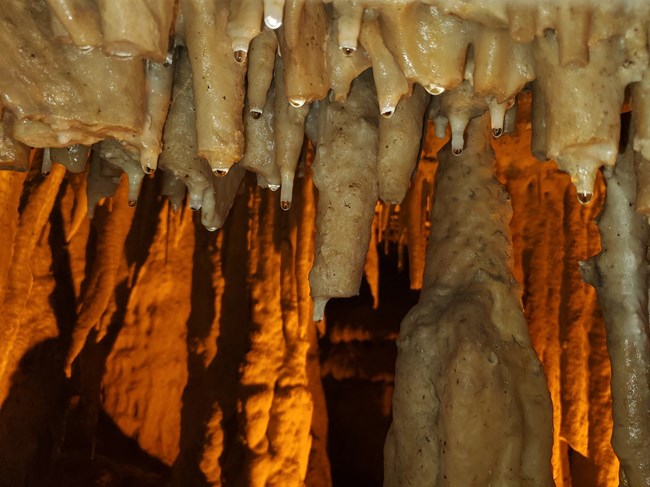
NPS Photo/ Rachel Kem Fragile and SlowBoth the calcite and gypsum formations in Mammoth Cave took thousands of years to form. In addition, many formations are incredibly fragile and can break or be forever damaged by a simple touch of the hand. Some of the park caves have been looted of their formations by past visitors looking to sell them for a profit. This destruction has forever robbed us of seeing these sections of cave in their full beauty as the damage cannot be reversed within our lifetimes. 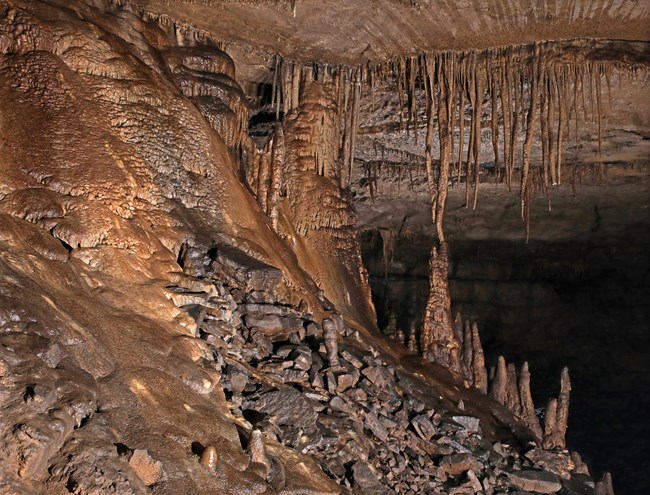
NPS Photo/ Jackie Wheet Stalagmites, Stalactites and ColumnsStalagmites and stalactites are some of the best known cave formations. They are icicle-shaped deposits that form when water dissolves overlying limestone then re-deposits calcium carbonate along the ceilings or floors of underlying caves. Other Calcite FormationsDepending on how water flows in a cave, many unique shapes and formations are possible. 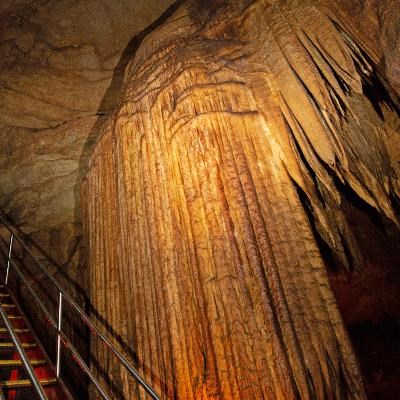
NPS Photo/ Deb Spillman FlowstoneFlowstone refers to sheets of calcium carbonate that form along cave walls. Flowstone hangs downward and may create curtain-like sheaves along ledges, better known as draperies. The most notable flowstone formation in Mammoth Cave is the Frozen Niagara. 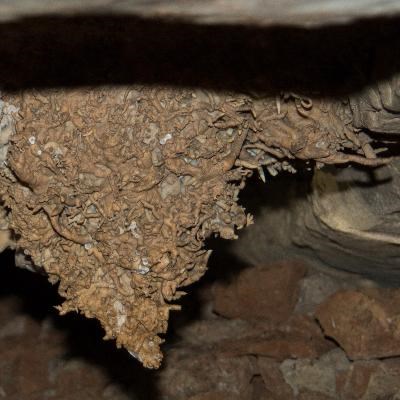
NPS Photo/ Deb Spillman HelictitesHelictites form in cave areas with minimal water seepage. Because water does not drip off of the helictite, as would happen with a stalactite, the water coats its surface creating strange, branch-like shapes. Helictites can be seen along the Great Onyx Lantern Tour. 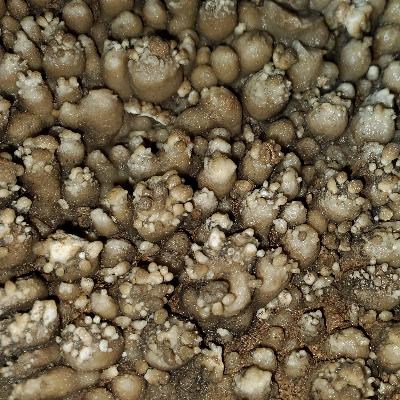
NPS Photo/ Rachel Kem Cave PopcornCave Popcorn refers to knobs of calcite that form where water seeps through pores in limestone, creating clusters that resemble popcorn, peas, or grapes. Cave Popcorn can be seen along the Grand Avenue and Domes and Dripstone Tour. 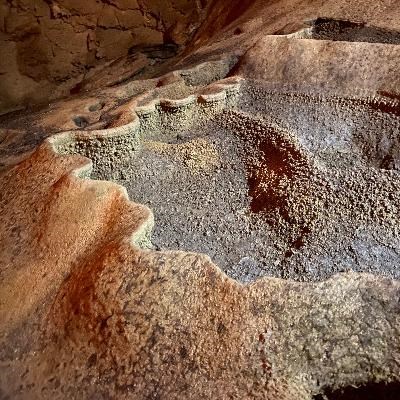
NPS Photo/ Thomas DiGiovannangelo Rimstone DamsRimstone dams form along floors where calcite rich water pool. These dams grow larger as more calcite is deposited and water continues to flow over the edge of the dam. Rimstone dams can be seen in the Frozen Niagara section. Cave MineralsPrehistoric American Indians utilized minerals from Mammoth Cave about 2000-3000 years ago. They came in and collected gypsum, epsomite, and mirabilite from the walls and sediments of the cave. 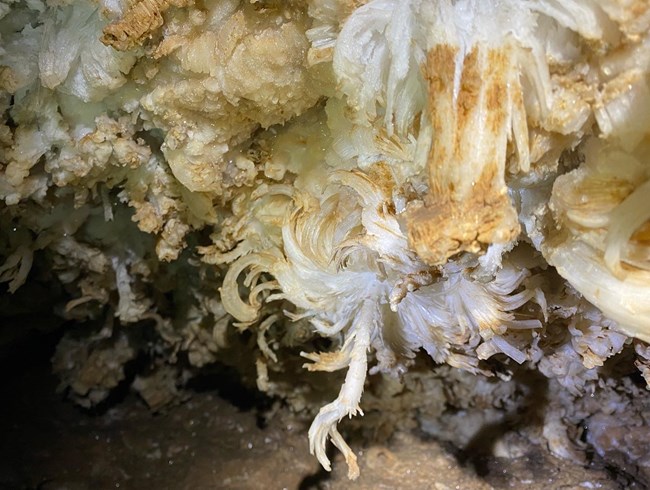
NPS Photo/ Thomas DiGiovannangelo GypsumGypsum is a mineral that forms in the dry areas of the cave. It is a calcium sulfate mineral that is soluble in water. It is most commonly seen as delicate white crystal found along tour routes such as Cleveland Avenue and Kentucky Avenue. Along Broadway in historic section of Mammoth Cave you can also see gypsum, but it is covered with a dark coating (so it looks dark brown instead of white).The coating on this gypsum is from smoke from the torches that people used in the cave 2000 – 3000 years ago. This discoloration can be seen particularly well near Giant’s Coffin and the historic Tuberculosis Huts. Gypsum will also grow as crystals in the dirt along some cave passages. Types of Gypsum FormationsCrusts — Crusts are where gypsum lines the walls as thin (or sometimes thick) plate covering (actually extruding from) the limestone. Crusts are common along the Historic Tour, Grand Avenue, and Great Onyx routes. 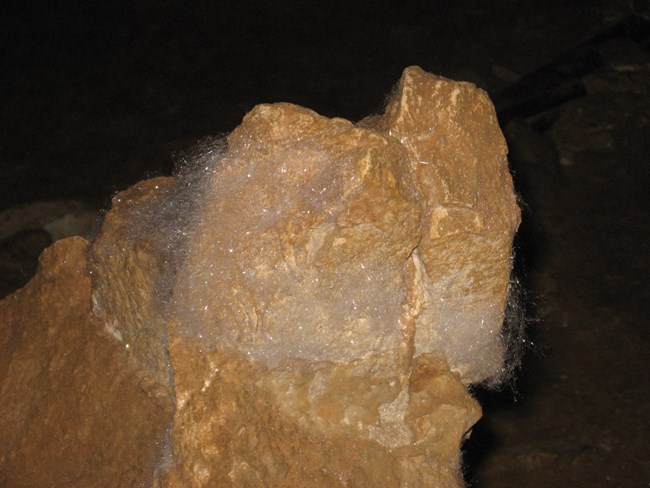
NPS Photo/ Mary Schubert Mirabilite and EpsomiteMirabilite and Epsomite are two other minerals that occur in dry sections of the cave. They can form in areas in the winter (when the air is drier) and dissolve away when more humid air comes in. They form a sprinkling on the floor that gives the Snow Room on the Lantern Tour its name. 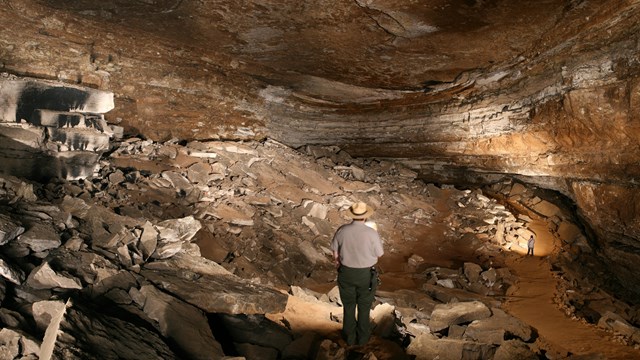
How Mammoth Cave Formed
Towering passageways, mountainous heaps of fallen rock, and a maze-like sprawl. 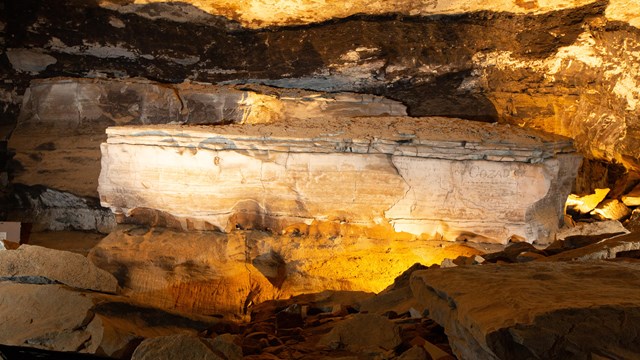
Rocks of Mammoth Cave
Types of rock found at Mammoth Cave. 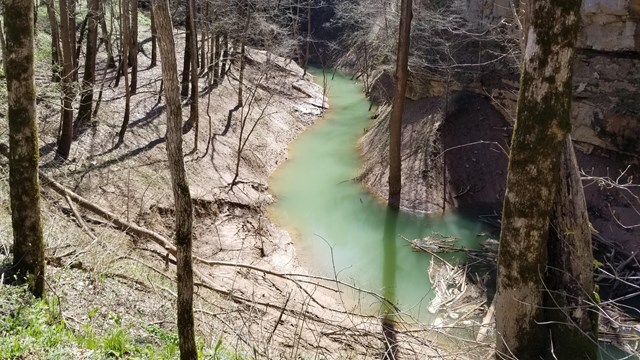
Karst Topography
Sinkholes, sinking streams, caves and more! 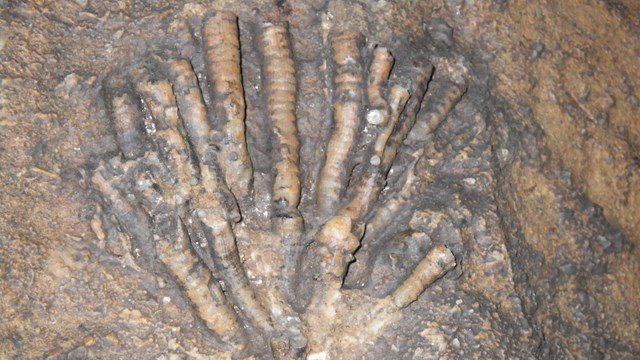
Fossils
Life before the cave. |
Last updated: April 9, 2023
